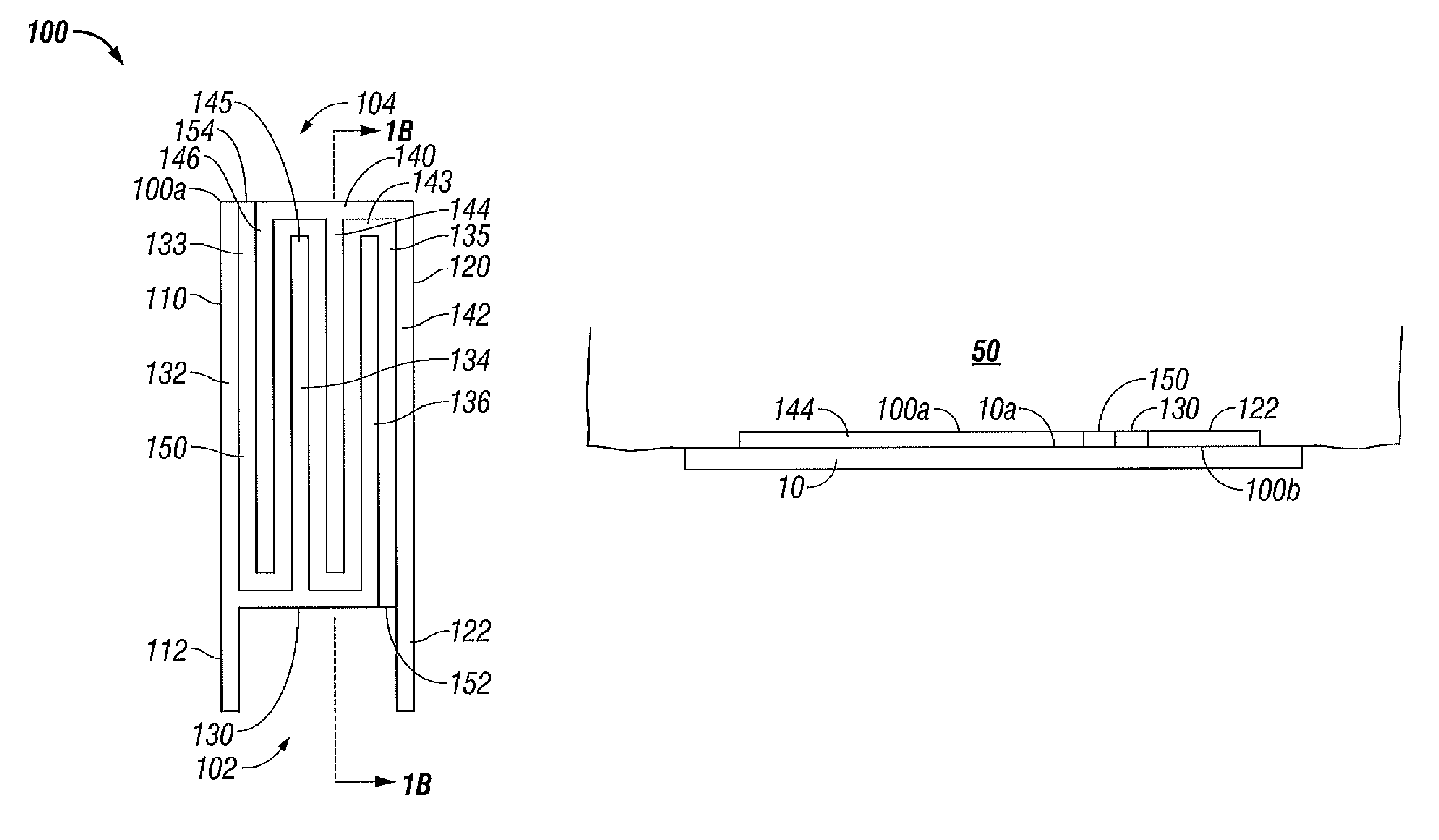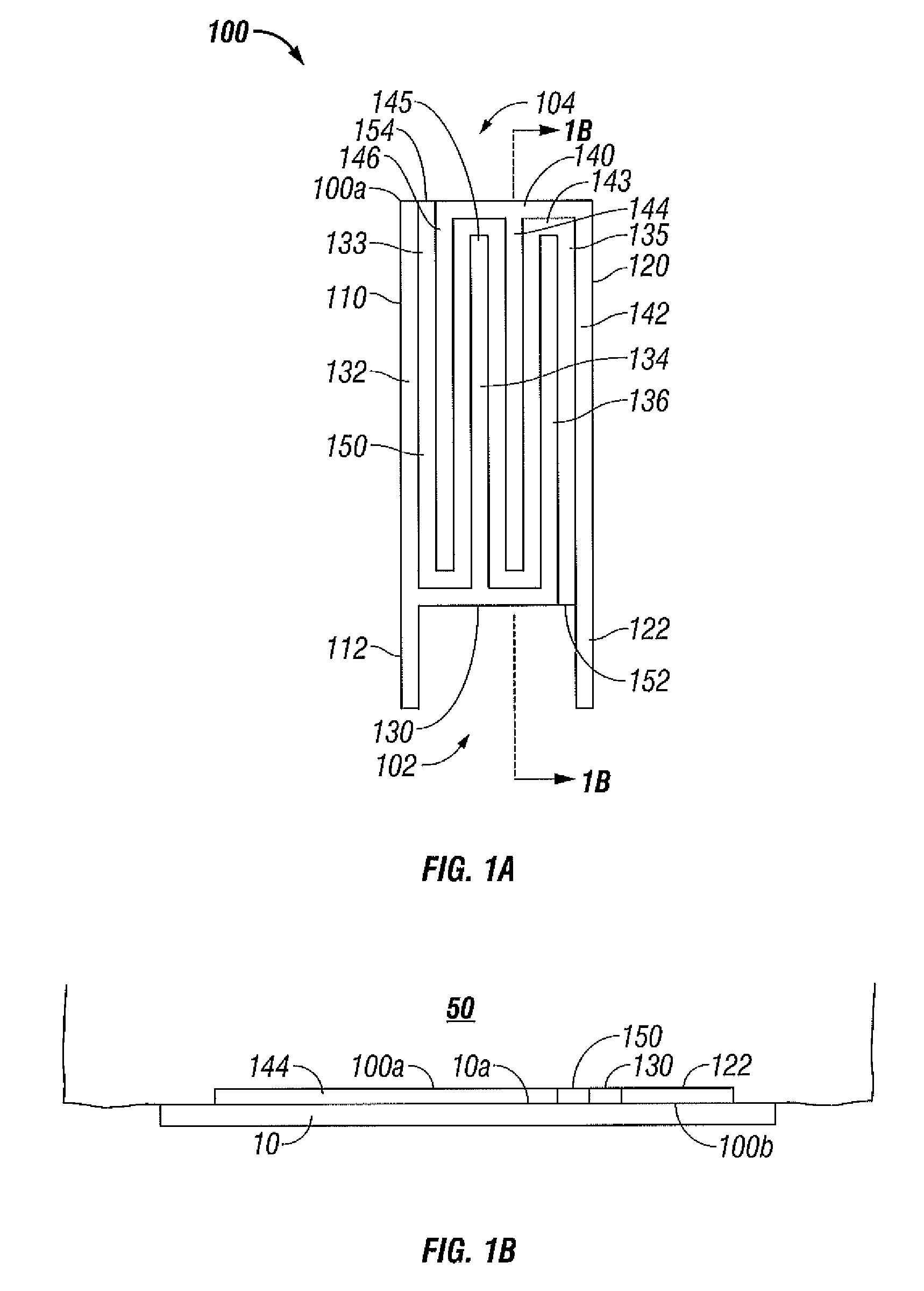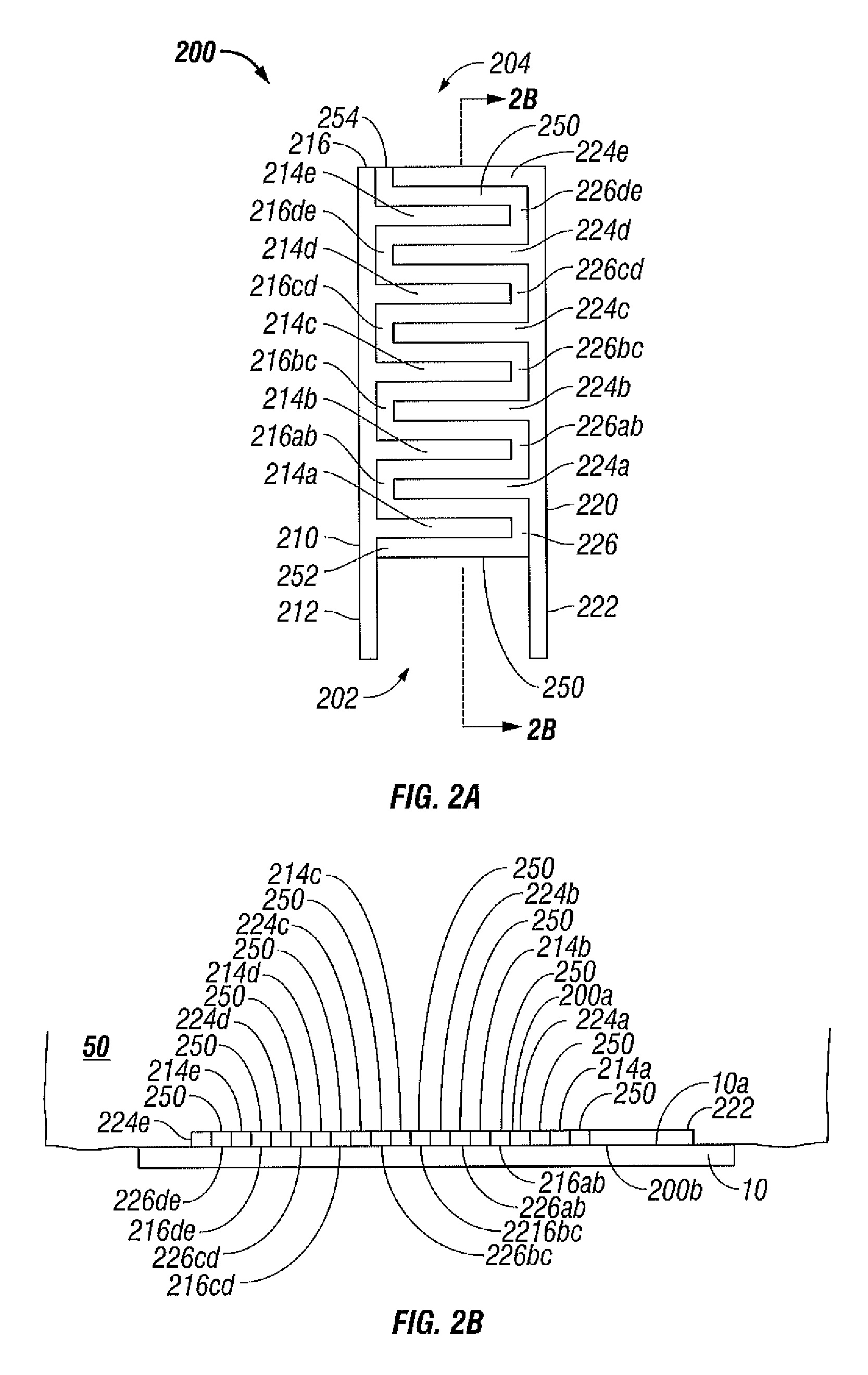Surface ablation process with electrode cooling methods
a cooling method and surface ablation technology, applied in the field of electrode assemblies, can solve problems such as desiccation or dehydration of contact tissue, and achieve the effects of reducing tissue build-up, efficient energy application, and improving thermal treatment of consistent volume of patient tissu
- Summary
- Abstract
- Description
- Claims
- Application Information
AI Technical Summary
Benefits of technology
Problems solved by technology
Method used
Image
Examples
Embodiment Construction
[0033]The present disclosure relates to an electrode assembly designed to thermally treat a consistent volume of patient tissue. The thermal treatment includes desiccation, coagulation and ablation during which the electrodes of the electrode assembly are cooled. The present disclosure relates also to a surface ablation system for thermal treatment of tissue that results in a reduction in tissue build-up on the electrode surfaces and more efficient application of energy. Such efficient application of energy provides contact desiccation (surface ablation) of tissue with minimal tissue sticking and charring of the electrode surfaces. Cooling of the electrode assembly allows deeper thermal penetration by reducing rapid heating and rise of impedance at the electrode to tissue interface by cooling the electrodes, thereby cooling the surfaces of the electrodes in contact with tissue.
[0034]The electrode assemblies according to the present disclosure enable treating of biological tissue by ...
PUM
| Property | Measurement | Unit |
|---|---|---|
| depth | aaaaa | aaaaa |
| depth | aaaaa | aaaaa |
| thickness | aaaaa | aaaaa |
Abstract
Description
Claims
Application Information
 Login to View More
Login to View More - R&D
- Intellectual Property
- Life Sciences
- Materials
- Tech Scout
- Unparalleled Data Quality
- Higher Quality Content
- 60% Fewer Hallucinations
Browse by: Latest US Patents, China's latest patents, Technical Efficacy Thesaurus, Application Domain, Technology Topic, Popular Technical Reports.
© 2025 PatSnap. All rights reserved.Legal|Privacy policy|Modern Slavery Act Transparency Statement|Sitemap|About US| Contact US: help@patsnap.com



